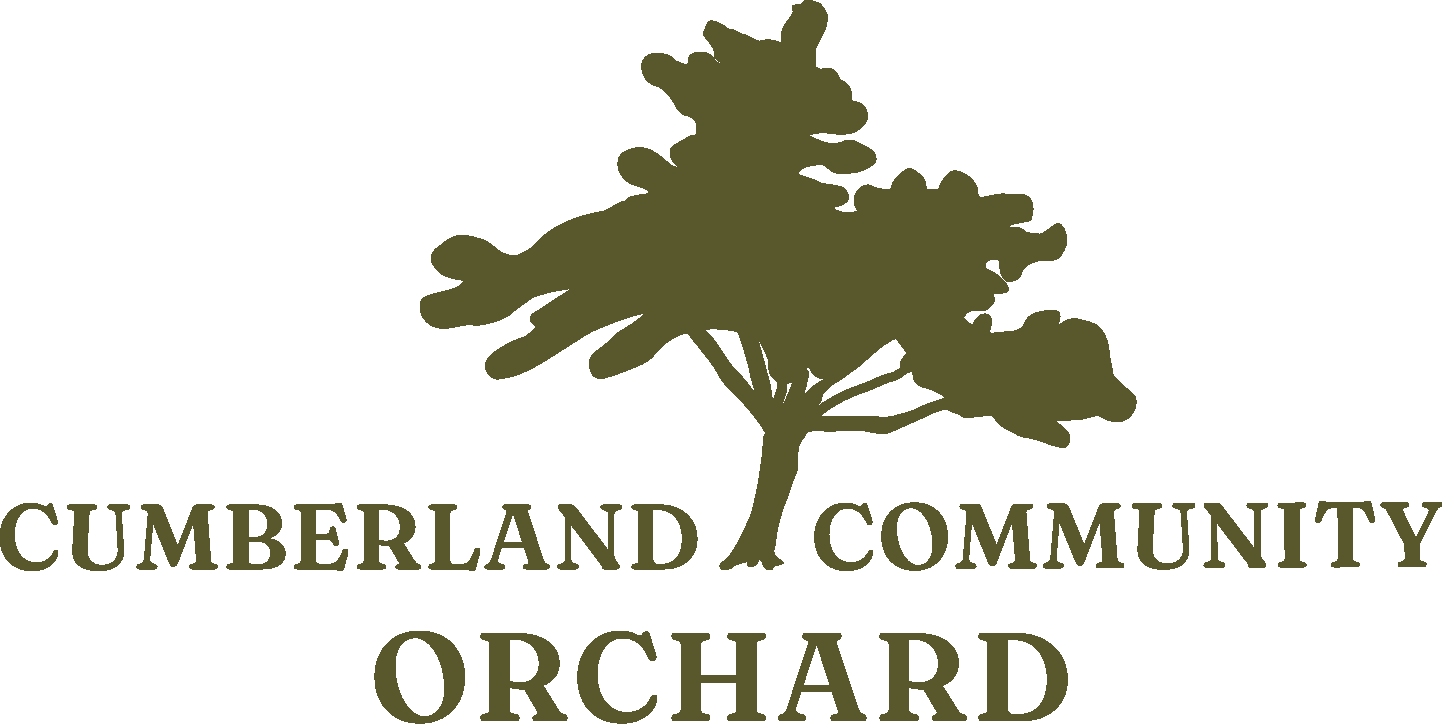Cherries
Cherries add a burst of vibrant color and sweet flavor to our community orchard
Benton Sweet Cherry
Prunus avium Summer. PC7146-8 Stella x Beaulieu. WSU, 2003.
Highly flavorful large firm deep red cherry resembles Bing. Neighbors reported that the cherries on their young tree last summer had a sweet chin-dripping heavenly flavor that made them think of little plums dressed up in cherry suits.
Less susceptible to cracking than other varieties. Flowers almost a week later than other sweet cherries, potentially missing late frosts. Vigorous upright and spreading growth. Self-pollinating. PPA expired 2023! Z5.
Ebony Pearl Sweet Cherry
Prunus avium Summer. NY 32. NY Stn, Andersen and Brown, Geneva, 2008.
Large juicy sweet cherry with just enough tart for a perfect balance. Attractive deep red skin with orangey-red flesh. Excellent resistance to cracking, but not to cedar waxwings, who love cherries as much as we do! Some consider this the tastiest of the cherries released in Cornell’s Pearl series. WhiteGold is a good pollinator for EbonyPearl. Z5
Gold Sweet Cherry
Prunus avium Summer. Chance seedling. Stark Bros Nursery intro, Louisiana, MO, about 1932. Also called Stark Gold or Stark Gold Sweet Cherry.
Medium-sized crack-resistant fruit has translucent golden-yellow skin and firm flesh of exceptionally good quality. Originally selected for maraschino cherry processing, but its hardiness and good taste made it an excellent choice for northern sweet-cherry growers. Very productive large tree. Ripens late. Developed or selected by CJ Thomas in Rulo, Nebraska, and subsequently released by Stark Bros. Grown commercially in some areas. Requires a second variety for pollination. Z4/5.
Lapins Sweet Cherry
Prunus avium Summer. Van x Stella. Summerland Research and Development Centre, BC, Canada, 1983.
Large sweet high-quality black-mahogany-red–skinned fruit. Ripens a week after the popular sweet-cherry variety Stella, by mid-July in warmer districts. Very vigorous, productive and upright; crops consistently in central Maine. Self-pollinating, but benefits from planting with another variety. Z4/5.
Van Sweet Cherry
Prunus avium Summer. Empress Eugenie x open-pollinated. Summerland Res & Dev Ctr, BC, Canada, 1944.
Bing-type, almost black, medium to large fruit that ripens late in the cherry season. Very firm though somewhat susceptible to cracking, but we’ve eaten wonderful fruits in central Maine that were completely crack free. Heavy annual crops on a strong vigorous upright tree. Excellent pollinator for other sweet cherries but it’s self-sterile and requires a second variety for pollination. Z5, but worth trialing in Z4.
White Gold Sweet Cherry
Prunus avium Summer. NY 13688 (Emperor Francis x Stella) NY Stn, 2001. Also known as Newfane.
From the breeding program in Geneva, NY, another highly admired all-around excellent sweet cherry for the Northeast. Light red-yellow fruit with good size, great flavor and heavy cropping. Sweet light-colored flesh. Bob Purvis called it “the Rainier of the North.” Disease and crack resistant. Self-pollinating. The first self-fertile light-fleshed cherry released commercially in the U.S. Z4.
Montmorency Sour Cherry
Prunus cerasus Summer. Seedling of Cerise Hâtive or Cerise Commune. Montmorency Valley, France, before 1600. Introduced to the U.S. about 1830.
The most famous of all pie cherries. Long considered the standard of excellence in the U.S. Aromatic firm-fleshed bright red fruit makes a clear light pink juice and is a favorite for processing. Tart but still enjoyable fresh off the tree when fully ripe. Birds love them, too. Surprisingly hardy, showing no signs of dieback in central Maine after the arctic blast of February 2023. In Aroostook County trees fared better than Meteor. Appears to be resistant to brown rot.
Vigorous productive medium-sized upright-spreading tree tolerates a variety of soils. Z3/4







